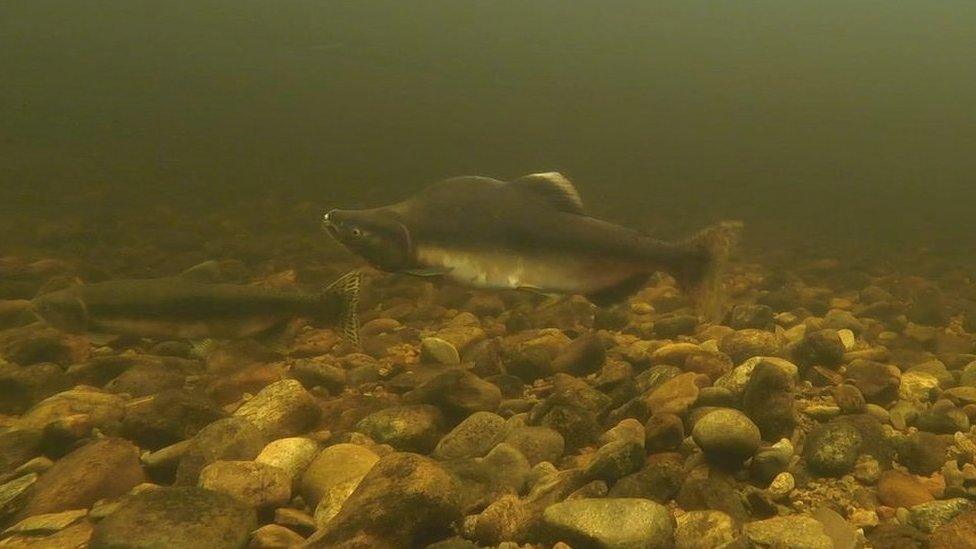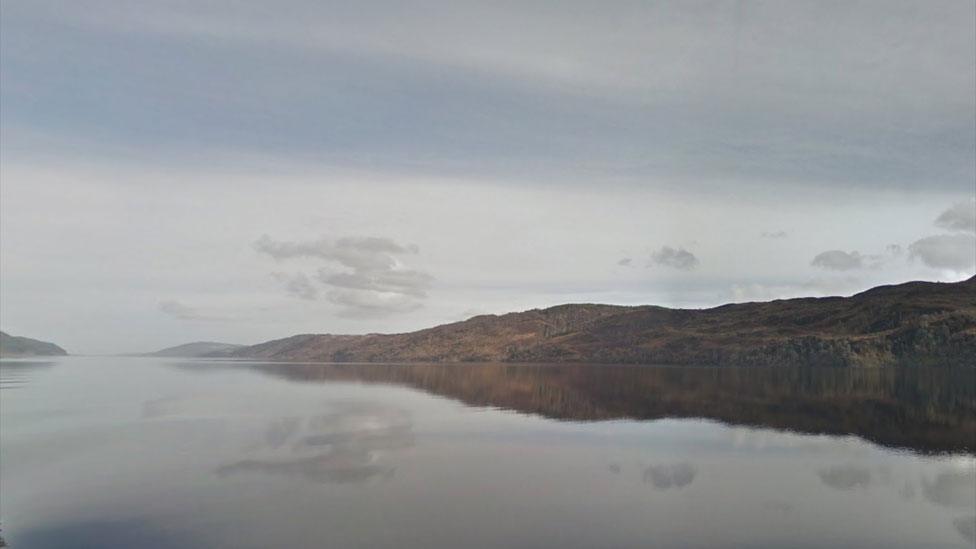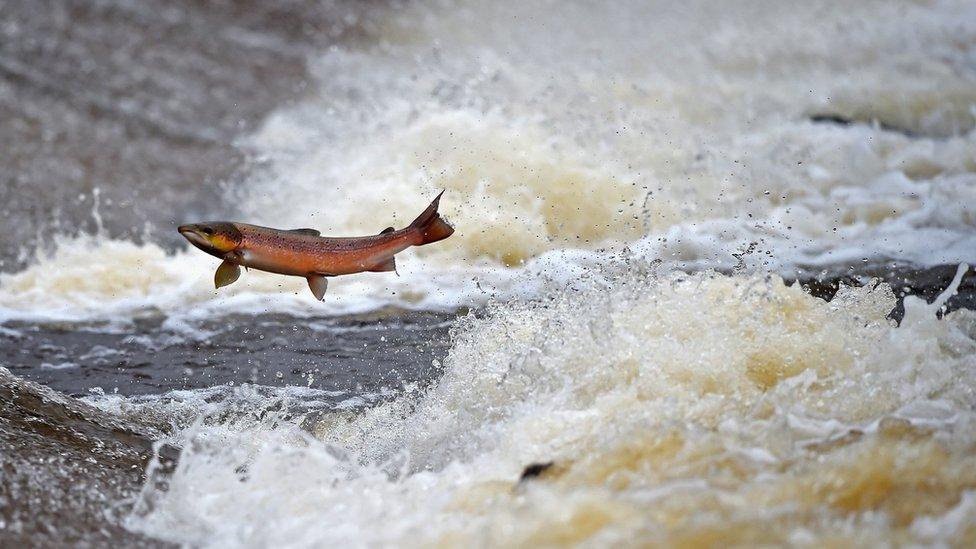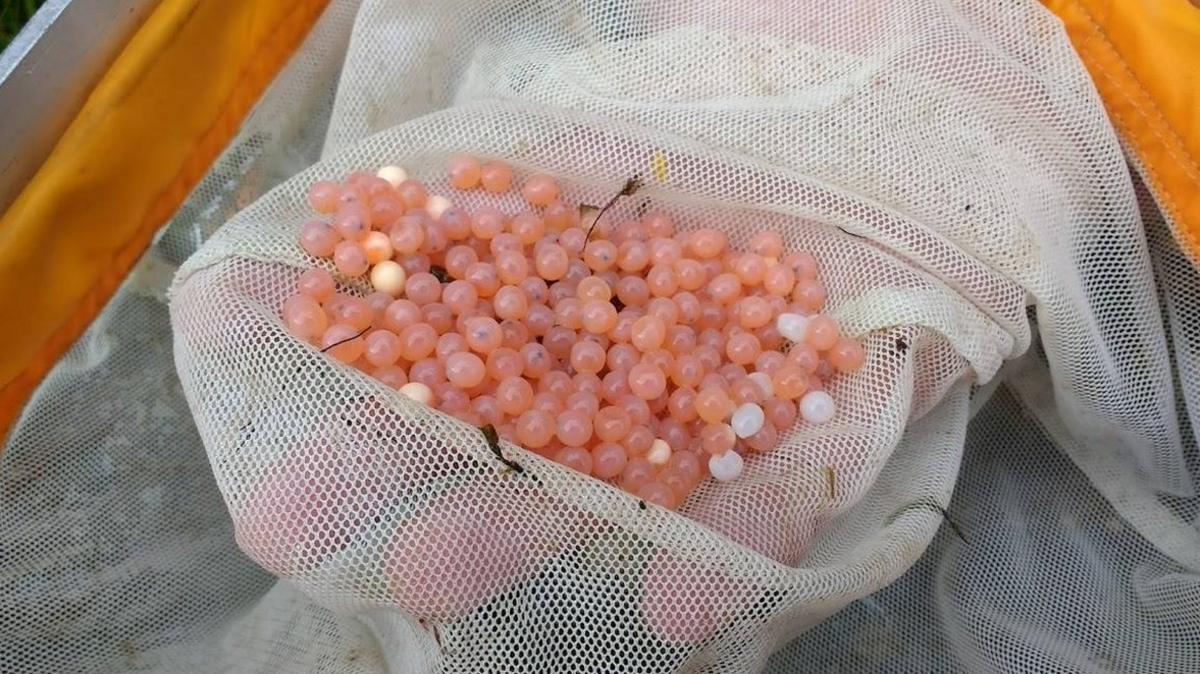Loch Ness DNA project may find invasive fish
- Published

A water sample being taken from Loch Ness
A DNA project could find evidence of an invasive species of fish in Loch Ness.
Scientists are taking water samples for analysis of the tiny fragments of animal skin and scales that float in the loch.
They have suggested they could find a "biological explanation" for the Loch Ness Monster.
But they are more certain of finding the DNA of non-native Pacific salmon, a fish seen spawning in the Ness, a river that flows from the loch.
Scientists from the University of Otago in Dunedin, New Zealand, and the University of the Highlands and Islands' UHI Rivers and Lochs Institute in Inverness are involved in the project.
The Inverness-based institute has been studying the presence of pink salmon in the River Ness.

Male and female pink salmon pictured in the River Ness last year
The Loch Ness science team is spending two weeks gathering samples from the loch's waters.
After the research trip, the samples will be sent to laboratories in New Zealand, Australia, Denmark and France for environmental DNA (eDNA) to be analysed against a genetic database.
The team expects to find sequences of DNA from known plants, fish and other organisms.

Researchers are spending two weeks collecting samples from Loch Ness
But talking to BBC Scotland last month, Prof Neil Gemmell, from the University of Otago, said eDNA from creatures not previously thought to inhabit the loch might also be found.
He said: "There's absolutely no doubt that we will find new stuff. And that's very exciting.
"While the prospect of looking for evidence of the Loch Ness monster is the hook to this project, there is an extraordinary amount of new knowledge that we will gain from the work about organisms that inhabit Loch Ness - the UK's largest freshwater body."
Prof Gemmell added: "There is this idea that an ancient Jurassic Age reptile might be in Loch Ness.
"If we find any reptilian DNA sequences in Loch Ness, that would be surprising and would be very, very interesting."

Anglers fear native Atlantic salmon could be at risk from Pacific pink salmon
Pink salmon are native to Pacific Ocean waters.
The fish are believed to be related to pink salmon introduced to rivers in Russia in the mid-1950s.
These fish have since gone on to be found in rivers in Scandinavian countries, including Norway.
Salmon and Trout Conservation UK and Prof Eric Verspoor, director of the Rivers and Lochs Institute, have warned of the potential risk to native salmon.
Threats include competition for food.
Professor Verspoor is involved in the new Loch Ness project.
He said: "Using this new technique, we will be able to see what's in that hidden world, underneath the surface of the water. It is such an internationally renowned body of water, yet we know so little about what's in it.
"Will we find evidence of Nessie? I doubt it, but you can never rule it out.
"We will certainly find DNA that is difficult to ascribe to known species. We're going to find all sorts of organisms, some which may well be unique to Loch Ness."
- Published23 May 2018

- Published5 September 2017
